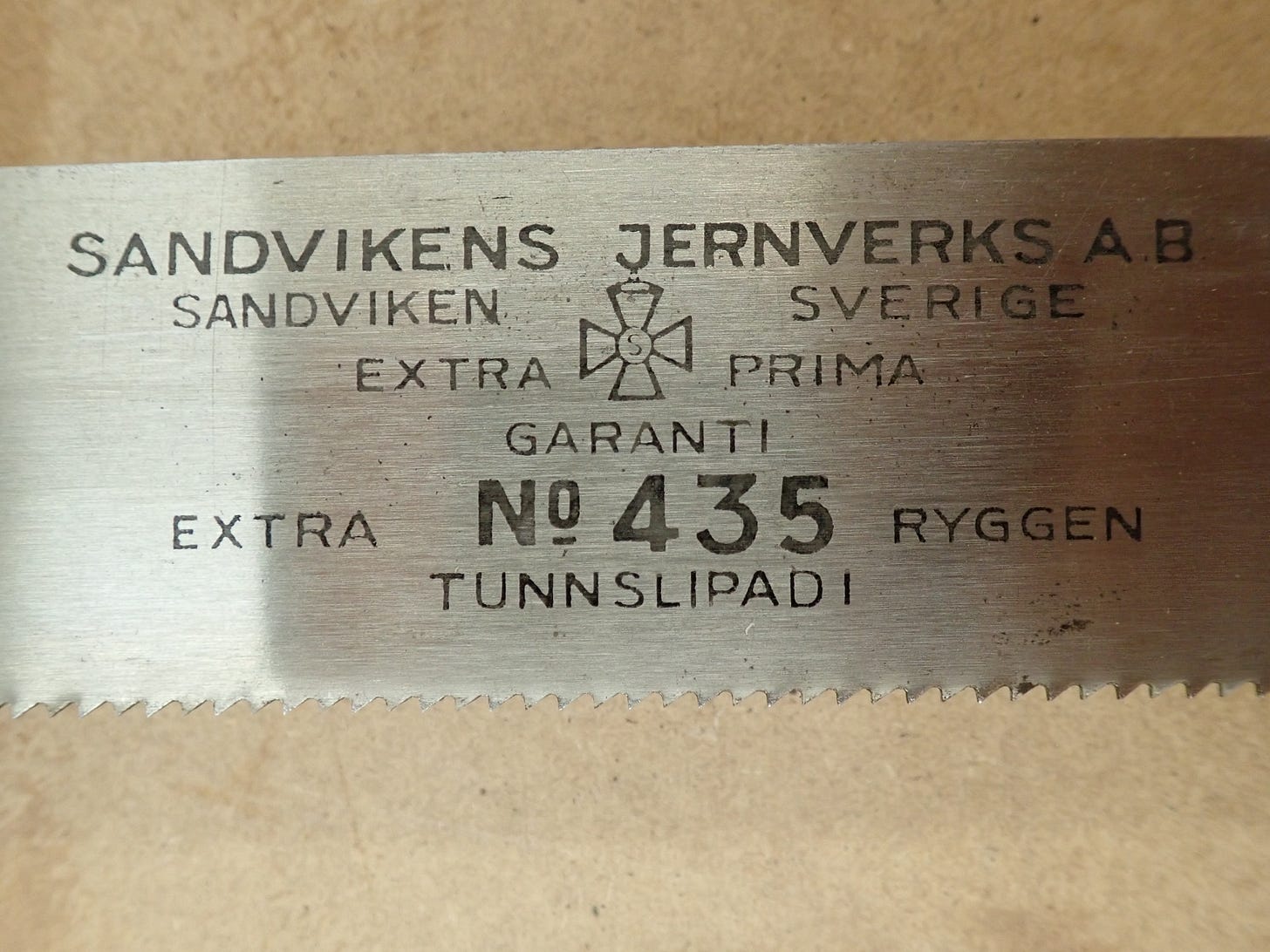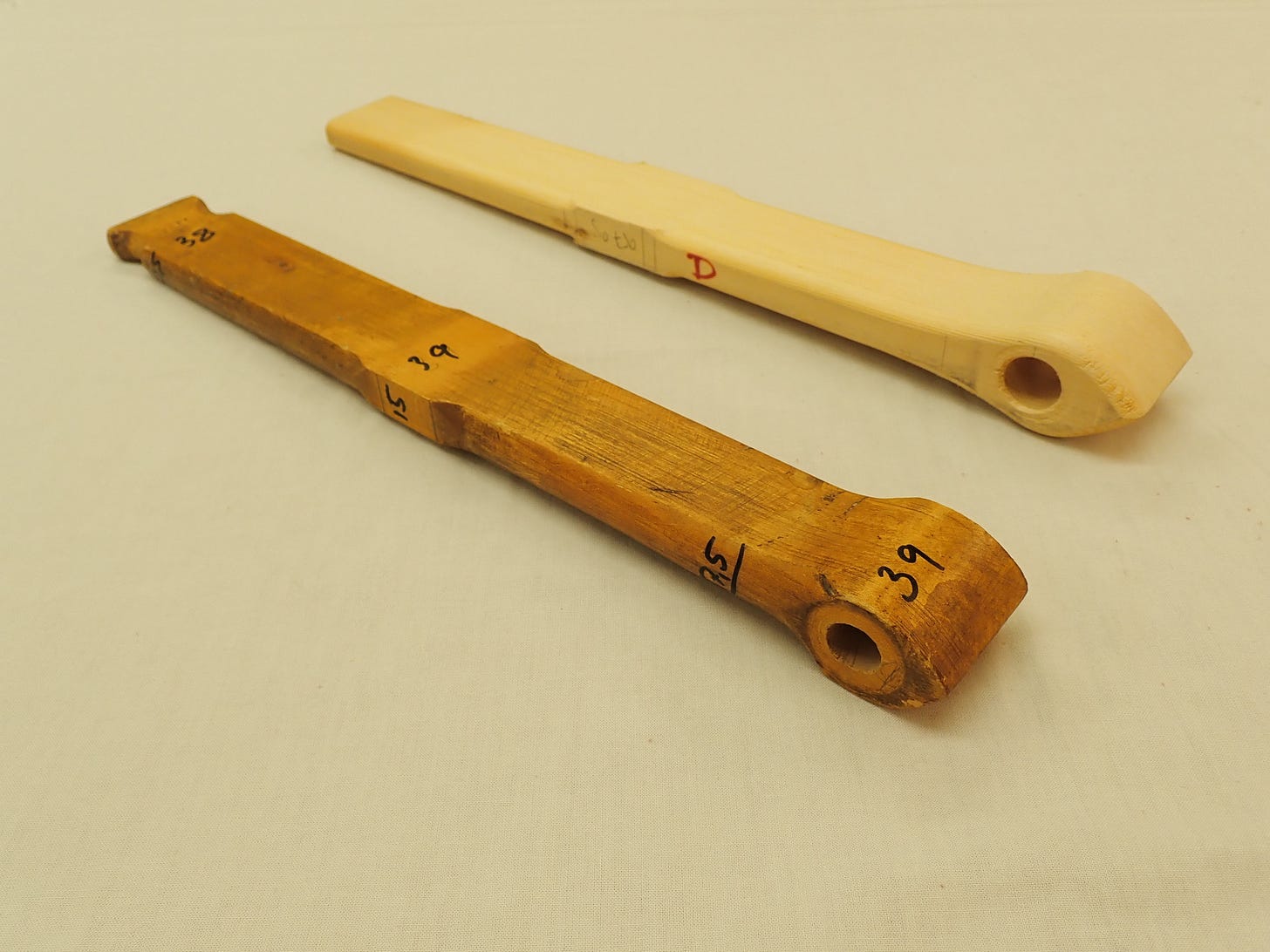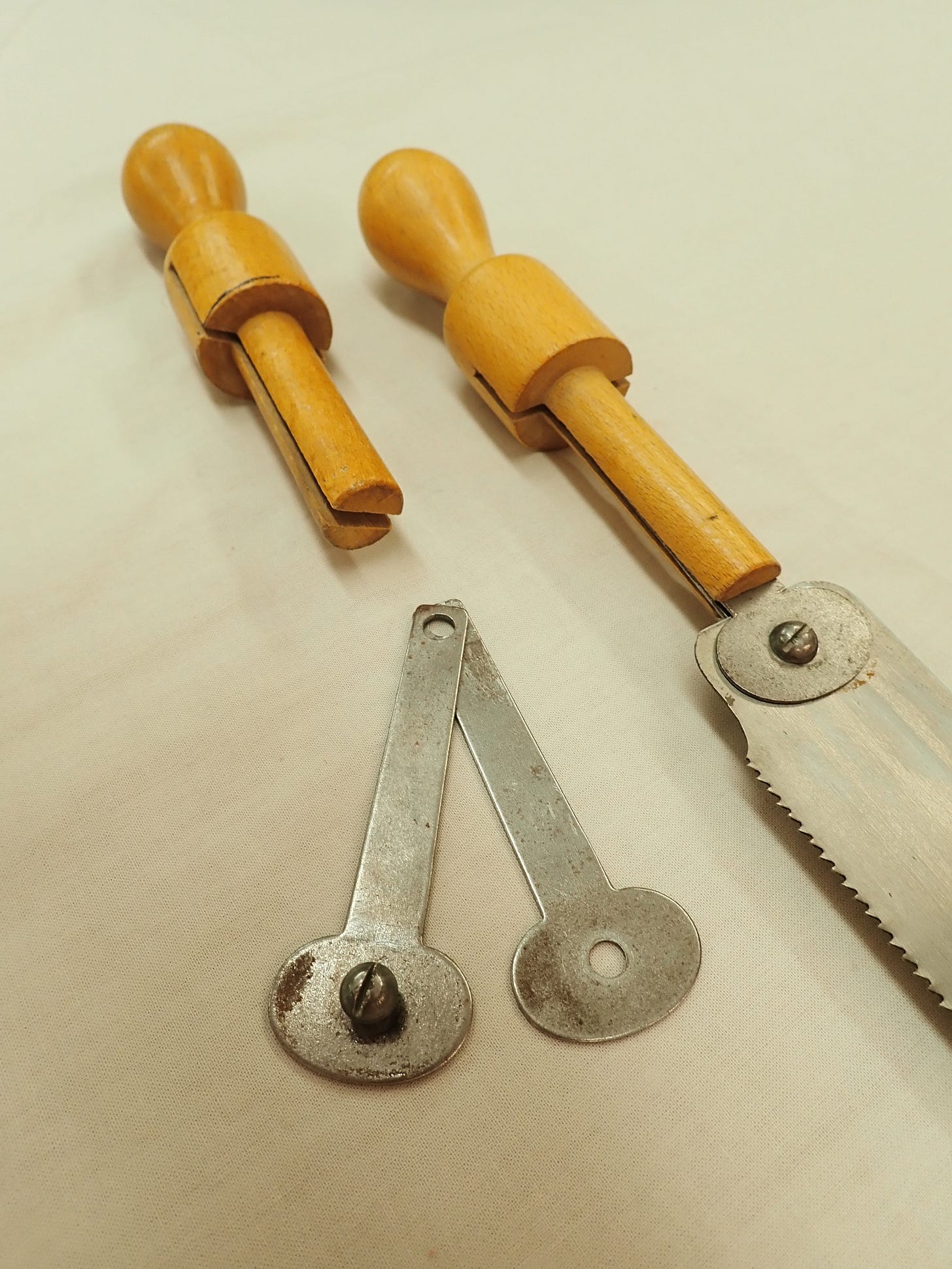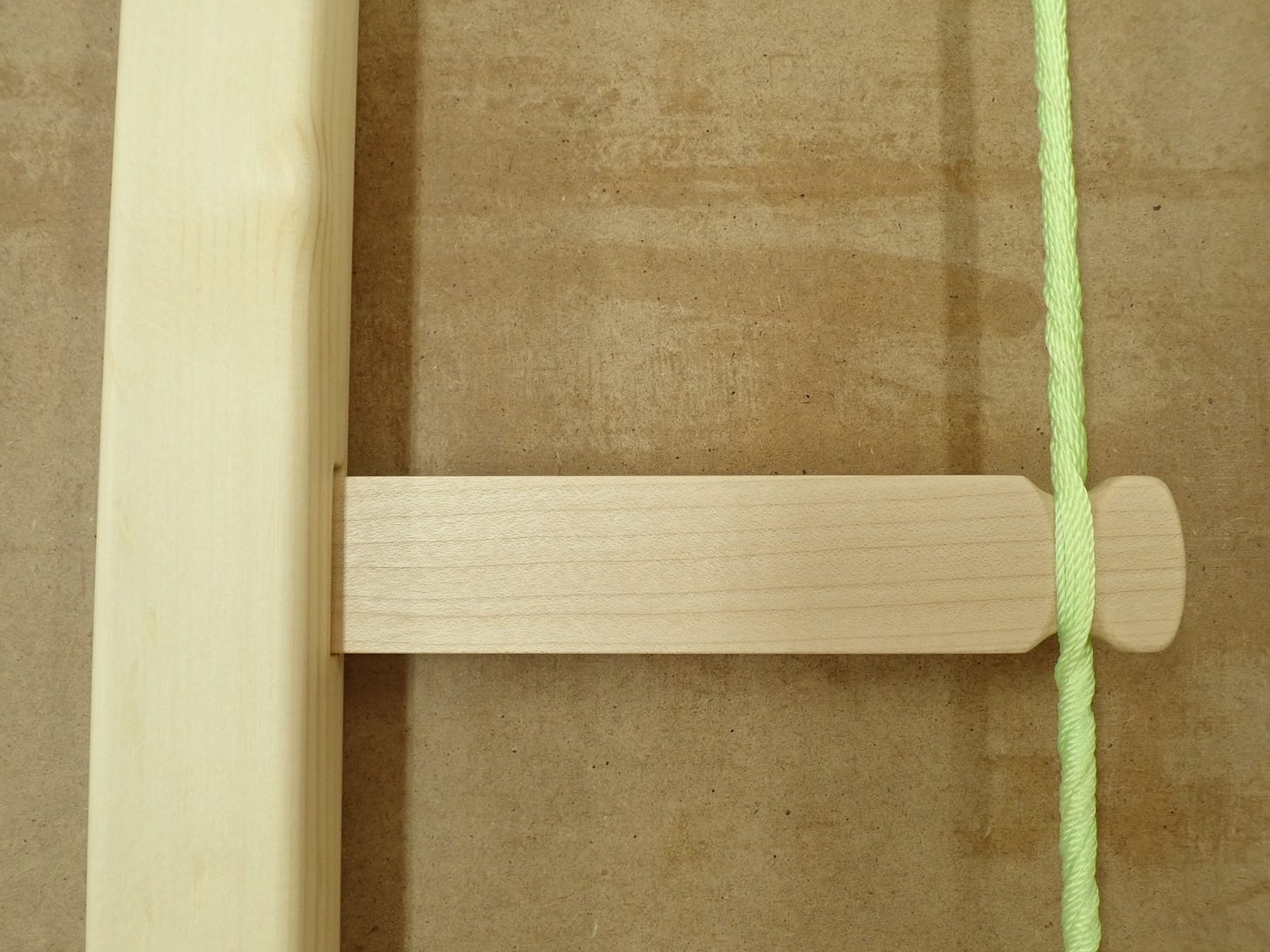[soundtrack : Jan Garbarek & Keith Jarrett — ‘My Song’]
A couple of years ago I helped my log-building colleagues with a job. They needed me to give a decorative shape to some of their timbers. I only have an old photo of the cross-section, but you get the idea. The end of this cross-section also needed to be given ‘a profile’.
Cutting the profile / shape on the end of these timbers was a job for a bow saw with its fairly narrow sawblade, the timbers being too big to manhandle onto the band saw. I had to borrow a bow saw from my old friend Hróðvaldr the Verksmester (Master of Works :-). He had one from Dictum. It did the job, just about, but was not a tool to my liking. It was too heavy, specifically; top-heavy, and the (hardwood) handles / cheeks were ergonomically unhelpful, becoming slippery when sweaty and to make matters worse, were too round in cross-section. Or, to quote the sales pitch: “made of precious wood with finely sanded, oiled and polished surfaces”.
Now … I have been harbouring a small collection of bow saw blades for the last 25 years with the idea of one day making frames for them. They have been hanging patiently on a finishing nail in my various workshops all these years. Some people slander me by suggesting I procrastinate, but they misunder-stand: My patience is of a timescale they cannot comprehend — I make all my mistakes under the watchful eye of eternity. And now the time had clearly come to make some more.
My goal was to make a lighter and less top-heavy saw by substituting the hardwood frame for one made of ‘dry’ (not resinous) but tight pine for the handles, and fast-grown but flawless spruce for the stretcher. Tensioning would be accomplished by twisting a bunch of nylon cord with a toggle (Spanish windlass) in stead of the heavy steel rod.
I would also alter the basic frame construction: Where contemporary saws connect the handles to the stretcher by a small tenon (or small ‘locating nub’) I would copy the old Norwegian saws we used at school, where the slightly tapering handle passed through a mortise in the stretcher itself, as you will understand from this old handle I’ve kept for reference:
I bought turned knobs and hardware from Dieter Schmid, neither of which compared favourably to my original parts that you can see here:
I ended up with 4 saws of differing lengths:

I managed to reduce the weight from 874 grams (30,83 oz.)
to 697 grams (24,59 oz.) — a reduction of 177 g. (6,24 oz.)
The saws work well enough, but are undoubtedly more unwieldy than my ‘normal’ saws. I prefer using them vertically, letting gravity help to keep them perpendicular, with the workpiece held flat on the bench. The bow saws have their uses as a ‘speciality tool’ and I plan to make some more. I am currently making some Grammercy turning saws in-between jobs …
I still have a couple of narrower, old saw blades on a nail that could become useful, slightly larger turning saws … perhaps some time in the next 25 years or so?















